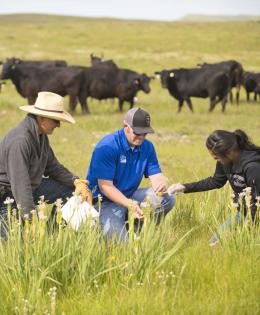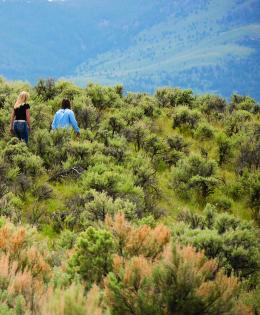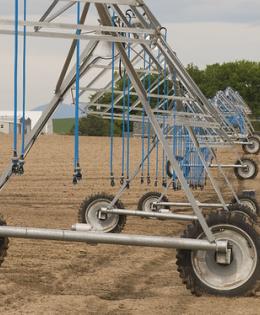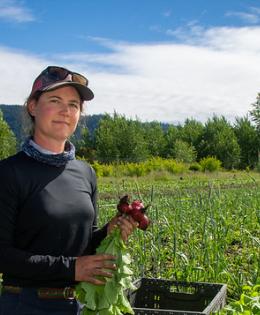

Welcome to NRCS in Montana! Helping people help the land.
Popular Topics

Montana Focused Conservation and Local Working Groups
In Montana, NRCS uses a Focused Conservation strategy to guide its EQIP investments. Focused Conservation begins with goals identified by local working groups and set forth in local-level long range plans. Based on those plans, NRCS develops Targeted Implementation Plans (TIPs) to guide on-the-ground implementation.
What's Available in My County?
Find Targeted Implementation Plans and other local programs and initiatives offered in your area. In addition to the local opportunities, producers may also apply for statewide and national programs.

Montana Snow Survey Program
The NRCS Montana Snow Survey Program provides mountain snowpack and precipitation data to forecast snowmelt-driven runoff during spring and summer.

Outreach and Civil Rights in Montana
This site is a convenient starting point to obtain information pertaining to equal opportunity, civil rights or special emphasis.
Montana Programs and Application Dates
Program applications are accepted on a continual basis, however, NRCS establishes application ranking dates for evaluation, ranking and approval of eligible applications.
See the listing of all programs and initiatives available in Montana along with the application ranking dates.

Plant Materials - Montana and Wyoming
The Montana and Wyoming Plant Materials Program has over 200 technical documents, as well as a series of Webinars available. Both states are served by the Bridger Plant Materials Center (PMC).

Soil Health - Montana
Healthy soil gives us clean air and water, bountiful crops and forests, productive grazing lands, diverse wildlife, and beautiful landscapes.

Additional Conservation Topics
Information from NRCS Montana on natural resource conservation topics and agricultural practices.

Working for NRCS in Montana
See what attracts current and future employees to Montana, search for jobs, and find out how to apply.
Montana Employee Directory & State Office
State Programs and Initiatives
Montana Focused Conservation uses locally-developed conservation priorities to guide investments and partnerships to achieve clearly defined natural resource goals. These local priorities and natural resource concerns are addressed through Targeted Implementation Plans.

State Payment Schedule
NRCS provides financial assistance for selected conservation practices. The availability and amount of financial assistance can vary between states.
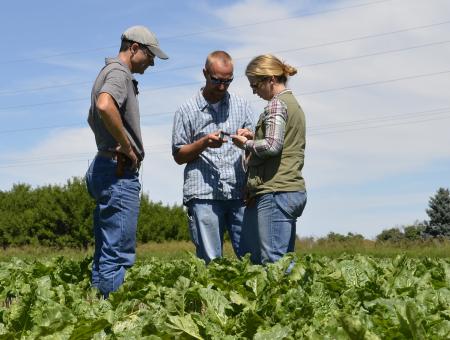
State Technical Committee
State Technical Committees serve in an advisory capacity to the Natural Resources Conservation Service (NRCS) and other agencies of the U.S. Department of Agriculture (USDA) on the implementation of the natural resources conservation provisions of Farm Bill legislation.
How to Get Assistance
Do you farm or ranch and want to make improvements to the land that you own or lease?
Natural Resources Conservation Service offers technical and financial assistance to help farmers, ranchers and forest landowners.

To get started with NRCS, we recommend you stop by your local NRCS field office. We’ll discuss your vision for your land.
NRCS provides landowners with free technical assistance, or advice, for their land. Common technical assistance includes: resource assessment, practice design and resource monitoring. Your conservation planner will help you determine if financial assistance is right for you.
We’ll walk you through the application process. To get started on applying for financial assistance, we’ll work with you:
- To fill out an AD 1026, which ensures a conservation plan is in place before lands with highly erodible soils are farmed. It also ensures that identified wetland areas are protected.
- To meet other eligibility certifications.
Once complete, we’ll work with you on the application, or CPA 1200.
Applications for most programs are accepted on a continuous basis, but they’re considered for funding in different ranking periods. Be sure to ask your local NRCS district conservationist about the deadline for the ranking period to ensure you turn in your application in time.
As part of the application process, we’ll check to see if you are eligible. To do this, you’ll need to bring:
- An official tax ID (Social Security number or an employer ID)
- A property deed or lease agreement to show you have control of the property; and
- A farm number.
If you don’t have a farm number, you can get one from USDA’s Farm Service Agency. Typically, the local FSA office is located in the same building as the local NRCS office. You only need a farm number if you’re interested in financial assistance.
NRCS will take a look at the applications and rank them according to local resource concerns, the amount of conservation benefits the work will provide and the needs of applicants. View Application Ranking Dates by State.
If you’re selected, you can choose whether to sign the contract for the work to be done.
Once you sign the contract, you’ll be provided standards and specifications for completing the practice or practices, and then you will have a specified amount of time to implement. Once the work is implemented and inspected, you’ll be paid the rate of compensation for the work if it meets NRCS standards and specifications.


